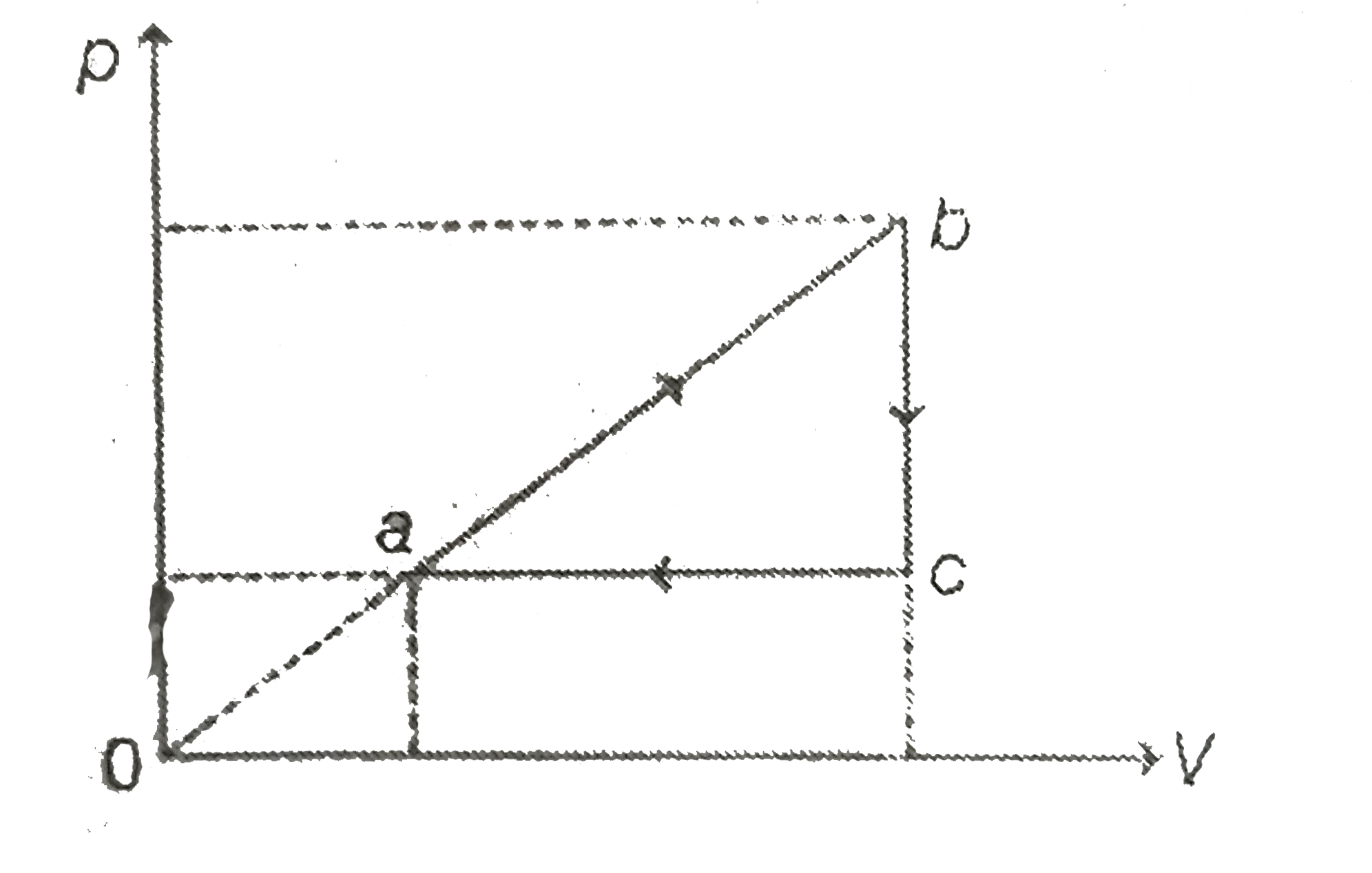The value of Cp−Cv is 1.09R for a gas sample in state A and is 1.00R in state B. Let AA,TB denote the temperature and pA and PB denote the pressure of the states A and B respectively. Then
pA<pB and TA>TB
pA>pB and TA>TB
pA=pB and TA<TB
pA>pB and TA<TB
The correct Answer is:D
To solve the problem, we need to analyze the given information regarding the specific heat capacities Cp and Cv for the gas in two different states, A and B.
1. Understanding the Given Information:
- For state A: Cp−Cv=1.09R
- For state B: Cp−Cv=1.00R
- We know that for an ideal gas, Cp−Cv=R.
2. Analyzing State B:
- Since Cp−Cv=1.00R in state B, this indicates that the gas behaves like an ideal gas in this state.
- Therefore, we can conclude that the temperature in state B is relatively high, allowing the gas to behave ideally.
3. Analyzing State A:
- In state A, Cp−Cv=1.09R, which is greater than 1.00R. This suggests that the gas in state A is not behaving like an ideal gas, likely due to intermolecular forces being significant at this state.
4. Temperature Comparison:
- Since state B behaves like an ideal gas, it must have a higher temperature than state A. Thus, we can conclude:
TB>TA
5. Pressure Comparison:
- To behave like an ideal gas, the pressure in state B must be lower than in state A. This is because, for real gases to approximate ideal behavior, they typically need to be at lower pressures (where intermolecular forces are less significant). Therefore, we conclude:
PA>PB
Final Relations:
- From the analysis, we have:
- TB>TA
- PA>PB
- For state A: Cp−Cv=1.09R
- For state B: Cp−Cv=1.00R
- We know that for an ideal gas, Cp−Cv=R.
- Since Cp−Cv=1.00R in state B, this indicates that the gas behaves like an ideal gas in this state.
- Therefore, we can conclude that the temperature in state B is relatively high, allowing the gas to behave ideally.
- In state A, Cp−Cv=1.09R, which is greater than 1.00R. This suggests that the gas in state A is not behaving like an ideal gas, likely due to intermolecular forces being significant at this state.
- Since state B behaves like an ideal gas, it must have a higher temperature than state A. Thus, we can conclude:
TB>TA
- To behave like an ideal gas, the pressure in state B must be lower than in state A. This is because, for real gases to approximate ideal behavior, they typically need to be at lower pressures (where intermolecular forces are less significant). Therefore, we conclude:
PA>PB
- From the analysis, we have:
- TB>TA
- PA>PB
Topper's Solved these Questions
- KTG & THERMODYNAMICSBOOK - RESONANCE ENGLISHCHAPTER - KTG & THERMODYNAMICSEXERCISE - PART -III
25 Videos
- KTG & THERMODYNAMICSBOOK - RESONANCE ENGLISHCHAPTER - KTG & THERMODYNAMICSEXERCISE - PART -IV
9 Videos
- KTG & THERMODYNAMICSBOOK - RESONANCE ENGLISHCHAPTER - KTG & THERMODYNAMICSEXERCISE - Exercise-2
1 Video
- KINETIC THEORY OF GASES AND THERMODYNAMICSBOOK - RESONANCE ENGLISHCHAPTER - KINETIC THEORY OF GASES AND THERMODYNAMICSEXERCISE - Exercise
64 Videos
- MAGNETIC FIELD AND FORCESBOOK - RESONANCE ENGLISHCHAPTER - MAGNETIC FIELD AND FORCESEXERCISE - Exercise
64 Videos
Similar Questions
The value of CP−Cv=1.00R for a gas in state A and CP−Cv=1.06R in another state. If PA and PB denote the pressure and TA and TB denote the temperature in the two states, then
View SolutionAn experiment is being performed by a student in laboratory on ideal gas. He found the value of CP−CV equal to 1.00 R in state A and is 1.08 R in state B.. Let P_A, P_B denote the pressures and T_A, T_B denote the temperature of state A and B respectively. Which of the following will be correct?
View SolutionTwo different ideal diatomic gases A and B are initially in the same state. A and B are then expanded to same final volume through adiabatic and isothermal process respectively. If PA,PB and TA,TB represents the final pressure and temperature of A and B respectively then.
View SolutionTwo different ideal diatomic gases A and B are initially in the same state. A and B are then expanded to same final volume through adiabatic and isothermal process respectively. If PA,PB and TA,TB represents the final pressure and temperature of A and B respectively then.
View SolutionTwo different ideal diatomic gases A and B are initially in the same state. A and B are then expanded to same final volume through adiabatic and isothermal process respectively. If PA,PB and TA,TB represents the final pressure and temperature of A and B respectively then.
View SolutionCvandCp denote the molar specific heat capacities of a gas at constant volume and constant pressure, respectively. Then
View SolutionCvandCp denote the molar specific heat capacities of a gas at constant volume and constant pressure, respectively. Then
View SolutionCvandCp denote the molar specific heat capacities of a gas at constant volume and constant pressure, respectively. Then
View SolutionCvandCp denote the molar specific heat capacities of a gas at constant volume and constant pressure, respectively. Then
View SolutionFigure illustrates a cycle conducted with n moles of an ideal gas. In the states a and b the gas temperatures are Ta and Tb respectively. Temperature of the gas in the state C is ltbr)

View Solution